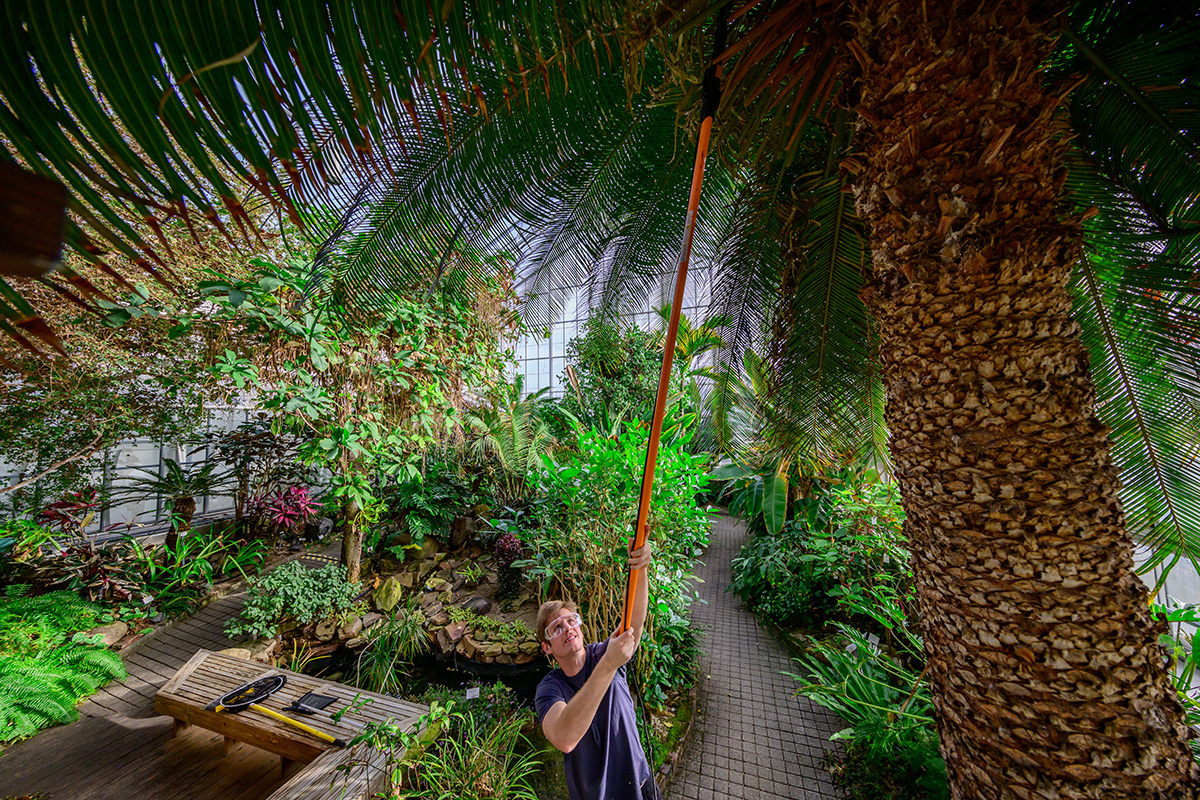
Greenhouse student worker Eric Sylvester cuts dead branches from a queen sago palm tree.
Photo by Fred Zwicky
URBANA, Ill. – Lexi Gomez is knee-deep in a pond when I first see her in the U. of I. Plant Biology Greenhouse and Conservatory. A fifth-year senior who will graduate this semester, Gomez dips a net in the dark water to clear the pond of debris fallen from the lush jungle of tropical plants that looms above. She attacks the work with gusto.
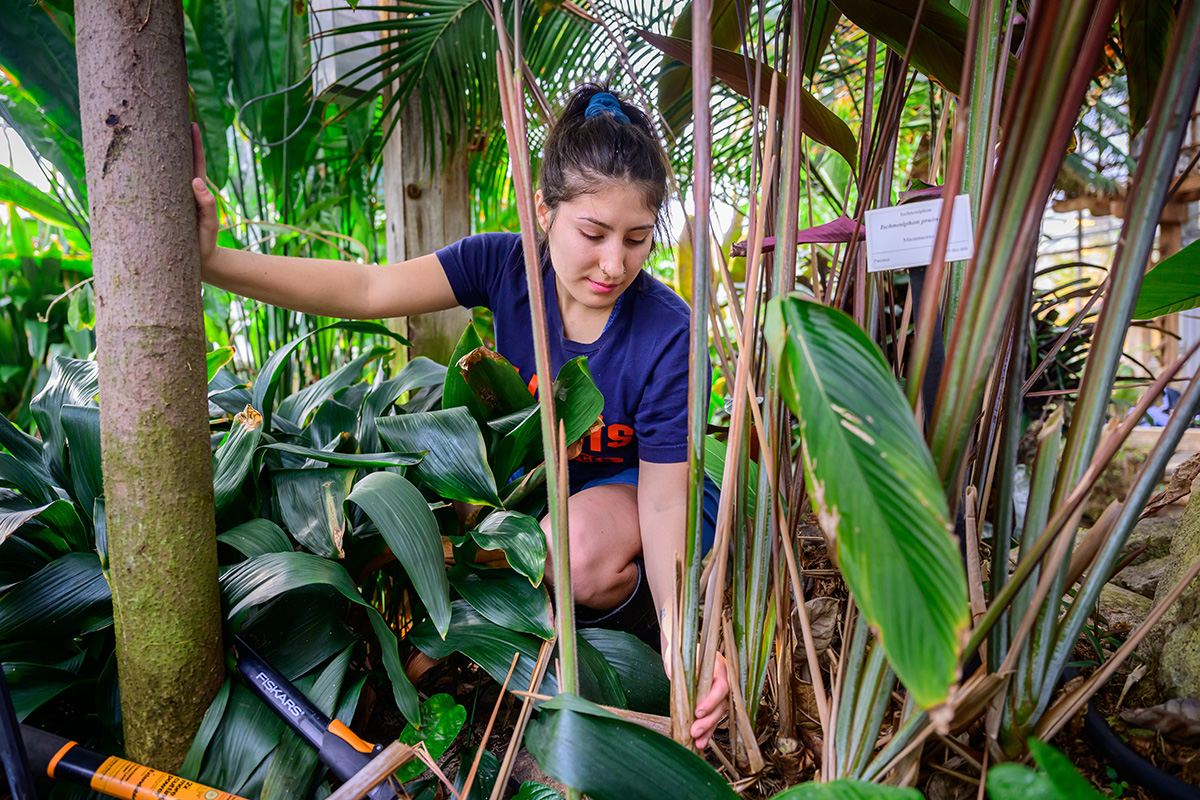
Greenhouse assistant student worker Alexandra (Lexi) Gomez cuts back dead foliage from a Ischnosiphon pruinosus plant.
Photo by Fred Zwicky
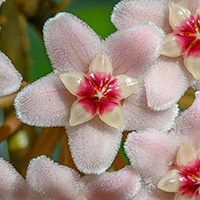
Hoya carnosa, in the Apocynaceae family.
Photo by Fred Zwicky
As a greenhouse assistant, Gomez is involved in many of the activities that allow these hothouse plants to thrive in a very untropical Midwestern climate. She cuts back aggressive saplings, prunes away dead tissue from leaves and stems, and attends to the varied watering regimes of plants in the different collection rooms and the conservatory.
"I water the plants. I fertilize plants. I've learned how to create the mixture that is needed for the fertilizers. I've also released biological controls with Heather," she says.
Heather is Heather Lash, the plant biology greenhouse coordinator who oversees the conservatory and research rooms. One of Lash's areas of expertise is the use of beneficial insects to control the sap-sucking pests that can quickly overwhelm a greenhouse community. Such controls have allowed her to cut down on the use of insecticides in the conservatory.
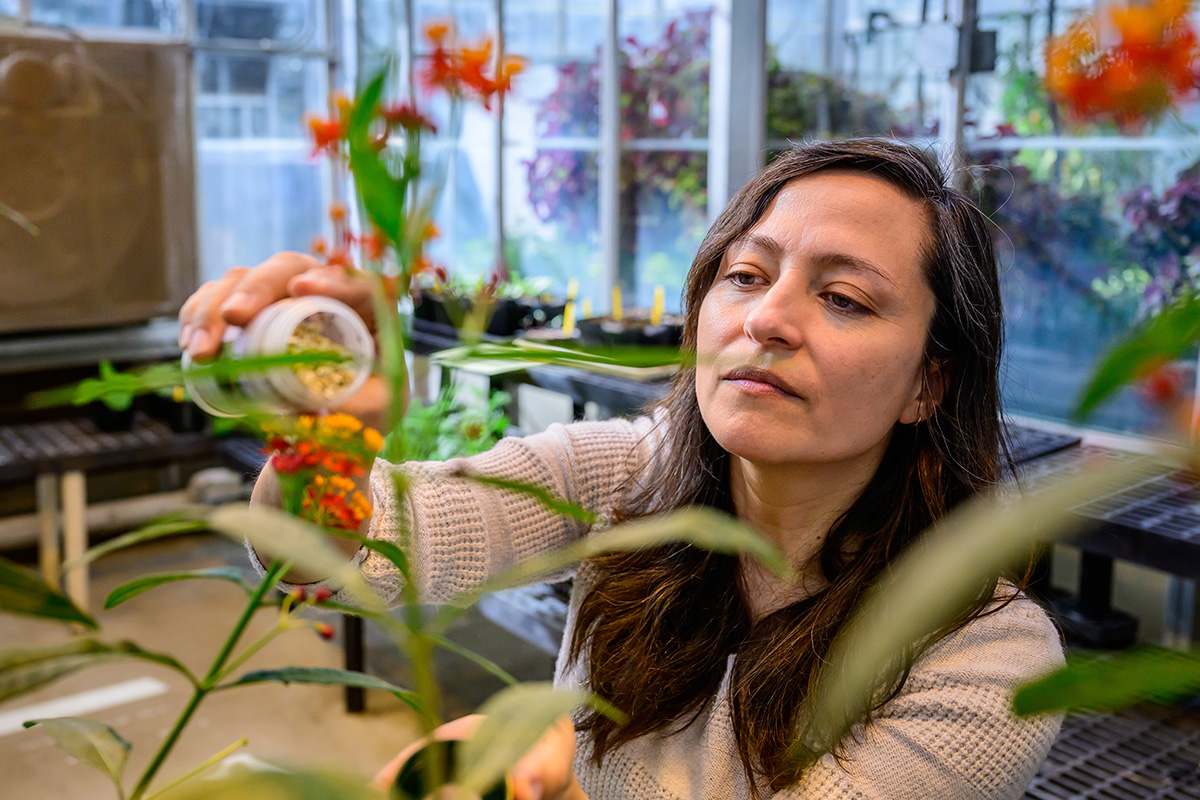
Plant biology greenhouse coordinator Heather Lash uses beneficial insects to control pests in the greenhouse, allowing her to reduce the use of pesticides. Here, she is applying Orius insidiosus, a generalist predator that pierces prey with its mouthparts, sucking out the body fluids.
Photo by Fred Zwicky
"We used to spray about 15 gallons of insecticide every week when I first started here about 17 years ago," Lash says. "And now I can go several weeks without having to spray anything at all."
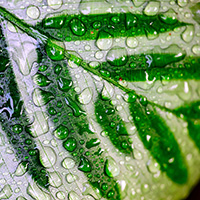
Water droplets form on the leaf of a Calathea.
Photo by Fred Zwicky
The conservatory is open to anyone who wants to get a look at some of the most exotic plants that humans across the planet depend on for food and other forms of sustenance. There are cacao and coffee plants, for example, and the plants that yield pineapple, vanilla, cinnamon, cardamom, mandarin oranges and cassava. Everywhere I look in the greenhouse, I see a new wonder. A banana tree – it's actually an herbaceous plant, Lash tells me – is heavy with fruit. Epiphytic orchids dangle overhead. In the cacti and succulents room, a gorgeous yellow blossom opens on an Opuntia tree cactus.
There is a room with carnivorous plants like sundews, which are covered in sticky projections that trap unsuspecting insects; and pitcher plants, which lure insects into pools of water. Lash tells me she keeps the largest pitcher plants near the floor to catch the bugs that become active at night. I look into one of the pitchers and see a cricket floating there, the plant's next meal.
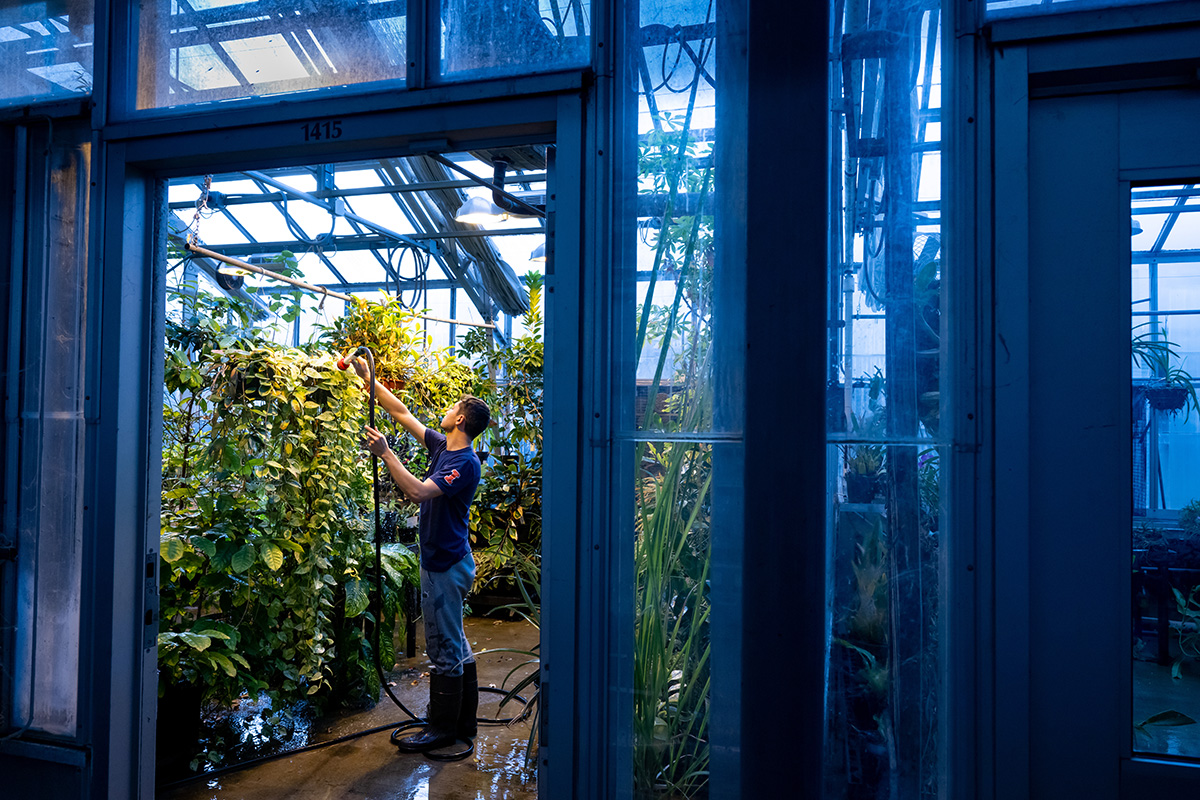
Student worker Askar Barinov carefully waters the tropical room collections.
Photo by Fred Zwicky
There are enormous versions of plants recognizable as houseplants: philodendrons, for example, and many varieties of geraniums. The largest room is the conservatory, which houses cycads – seed-bearing trees that have graced the earth for roughly 300 million years and retain their ancient, prehistoric feel.
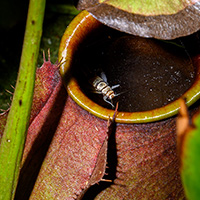
Pitcher plants lure insects like this unfortunate cricket into their water-filled "pitfall traps."
Photo by Fred Zwicky
Lash's enthusiasm for her work is evident as she shows photographer Fred Zwicky and me through the facility.
"This is probably where I'm going to stay until I retire," she tells us. "When I took this job, I thought this was a really great opportunity to come back to where my very first greenhouse job was and get back to my roots." She first worked in the conservatory as an undergraduate student years ago.
"I love being around the plants," she says. "I love being able to apply what I did my thesis on with biological controls. I love working with the plant-insect interactions."

A cacao pod ripens on a Theobroma cacao tree.
Photo by Fred Zwicky
Gomez shares her enthusiasm and ambition.
"I majored in crop sciences with a concentration in agro-ecology, minoring in horticulture and environmental systems," she says when I ask her about her plans. "I want to flip farms from conventional to agroforestry. I want to grow trees for crops or landscaping."
Gomez is one of many students, professors, staff and researchers who benefit from this green oasis, Lash says. Children of all ages visit the facility on school trips; university engineering and art students come here to find inspiration; integrative biology classes use these plants in their labs to learn about plant systematics and plant biology; several courses send their students on scavenger hunts in the collections to identify specific leaf shapes, flower types or other plant parts.
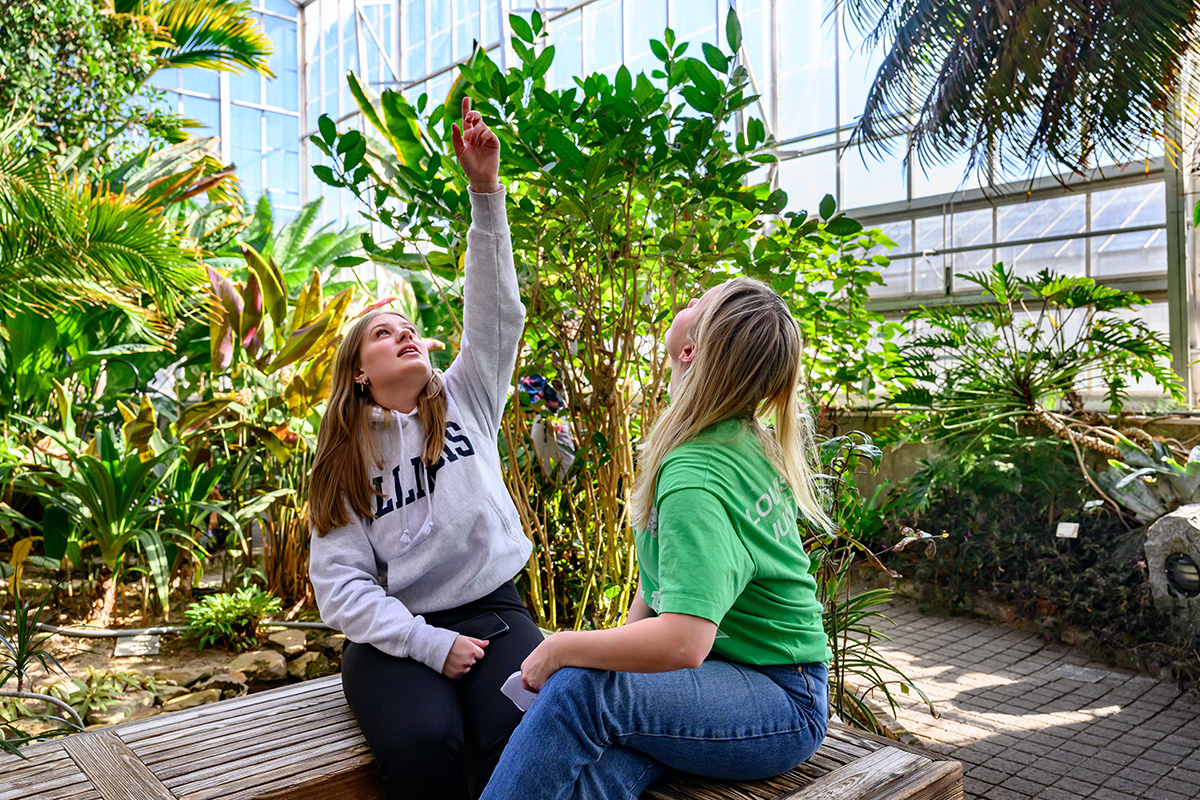
Technology Entrepreneur Center students Emelie Landström and Hanna Hjarpsgard take in features of the observatory during a class field trip.
Photo by Fred Zwicky
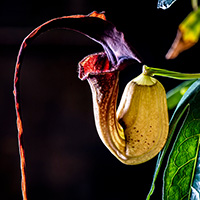
Aristolochia macroura, the long tail Dutchman's pipe, smells like a carcass to attract pollinators.
Photo by Fred Zwicky
The greenhouses harbor a host of resilient plants, but these organisms are not built to withstand the harsh Midwestern extremes. This means that Lash is perpetually on call. Sensor probes dangling in the center of each of the rooms will alert her if the temperature is too hot or too cold. Future versions of the sensors will include light meters and detect humidity, she said.

Hoya plants blossom, filling the room with their sweet fragrance. The individual flowers are a unique combination of waxy, fuzzy and sticky.
Photo by Fred Zwicky
"Winter is stressful when you're a greenhouse manager," Lash says. "Any time we see ice or snow coming, we don't sleep well because we're waiting for alarms to start going off."
Lash is eager to see even more visitors take advantage of this green oasis. She wants to improve the labeling of individual plants – potentially with QR codes for digital access – and create a catalog of everything in the collection. The greenhouses will also soon undergo an LED-lighting upgrade.
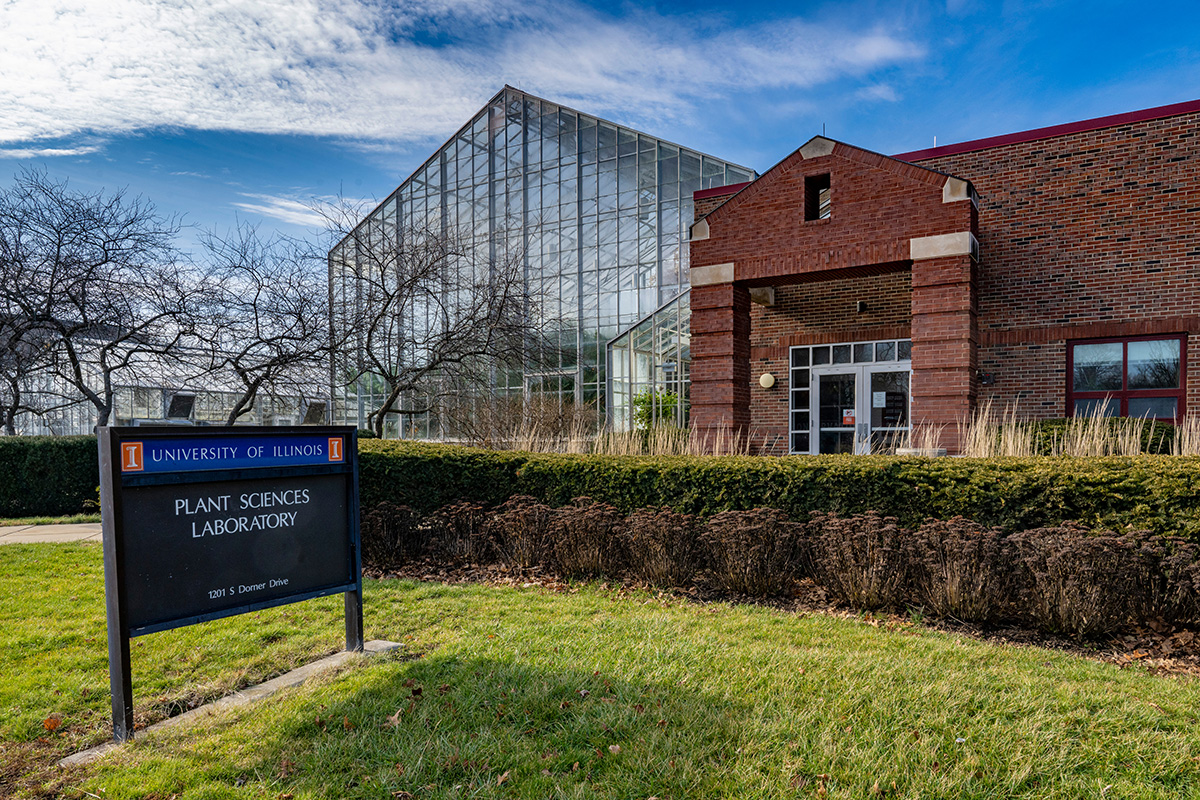
The University of Illinois Urbana-Champaign Plant Biology Greenhouse and Conservatory houses more than 200 species and 60 families of tropical and subtropical plants selected for their botanical interest or economic importance.
Photo by Fred Zwicky

Greenhouse coordinator Heather Lash smells the fragrance of a Hindu rope plant, Hoya carnosa Compacta.
Photo by Fred Zwicky
"I'm really curious to see what these plants are going to do when they have improved supplemental lighting," she says.
Gomez says she feels a spiritual connection to the plants.
"I see plants as people – they just can't move," she says. "They eat and drink like us, they talk, but it takes a really good ear to be able to truly understand what they're saying."






